Prune Forsythia In Spring Say Gardeners, Immediately After They’ve Finished Flowering
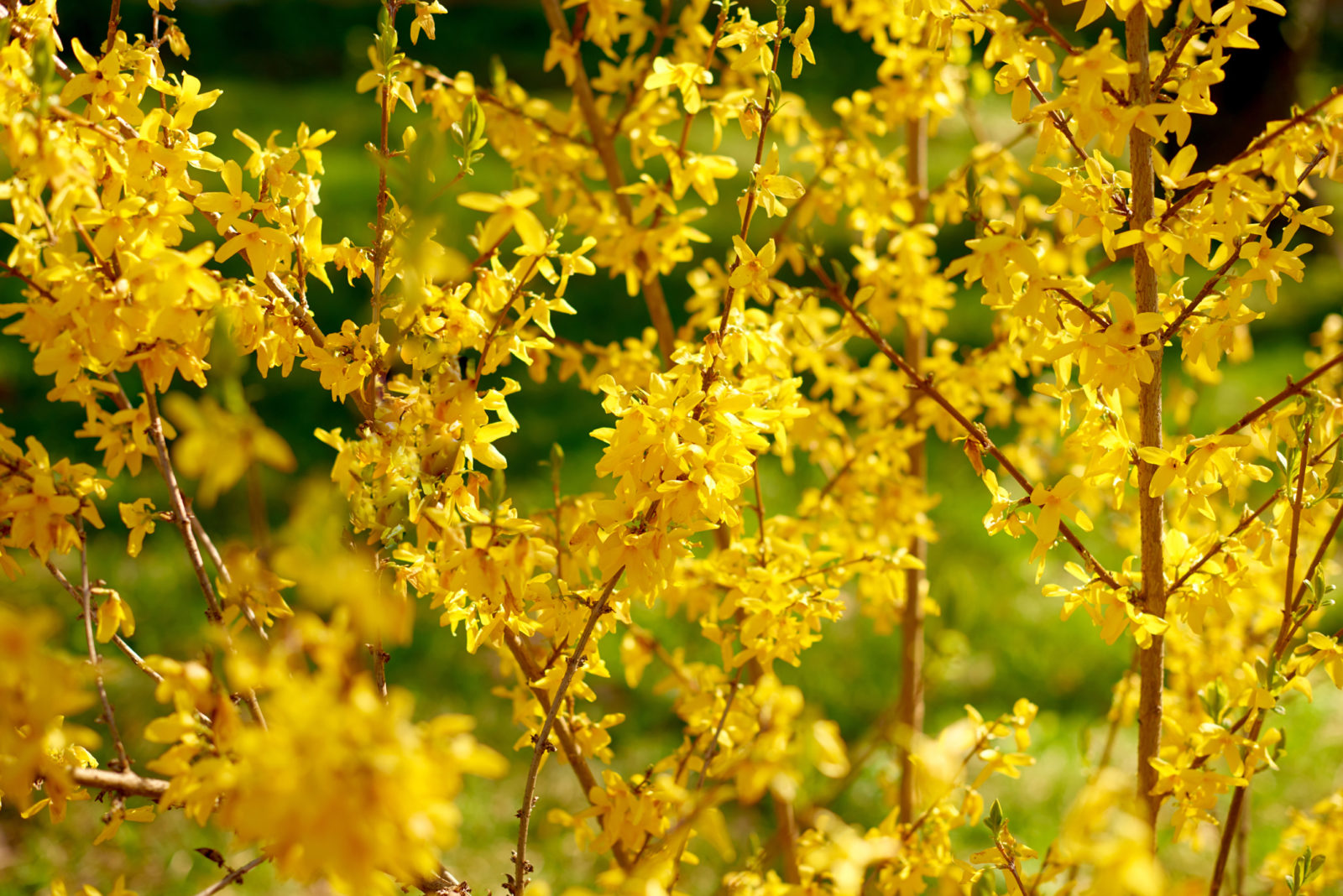

Elizabeth is a Permaculture Garden Designer, Sustainability Consultant and Professional Writer, working as an advocate for positive change. She graduated from the University of St. Andrews with an MA in English and Philosophy and obtained a Diploma in Applied Permaculture Design from the Permaculture Association.
Reviewed By COLIN SKELLY

Colin is a Horticulturist and Horticultural Consultant with experience in a range of practical and managerial roles across heritage, commercial and public horticulture. He holds the Royal Horticultural Society’s Master of Horticulture award and has a particular interest in horticultural ecology and naturalistic planting for habitat and climate resilience.
IN THIS GUIDE
FORSYTHIA GUIDES
Container Growing
Pruning
Varieties
Forsythias can be remarkably easy and trouble-free plants to grow, and their yellow flowers in spring are not only attractive to us but also to pollinators early in the year when there may not be much else in bloom.
The forsythia in my garden attracts pollinators, ensuring that there are plenty around when, soon after the forsythia has flowered, the fruit tree blossom emerges.
Alongside a flowering currant, this shrub is beneficial for my wildlife-friendly and productive space, as well as looking very cheerful early in the year.
Forsythia can largely look after itself once established, but though I am an advocate for minimal pruning with many plants, forsythia is one plant that really will thrive under a good pruning regime.
So, let’s take a look at how to prune forsythia shrubs.
| Difficulty | Easy |
| Equipment Required | Secateurs or gardening knife |
| When To Prune | Spring |
When To Prune Forsythia
Forsythia should be pruned in spring, immediately after they have finished flowering.
Pruning any later can reduce flowering or even lead to a lack of flowering the following year.
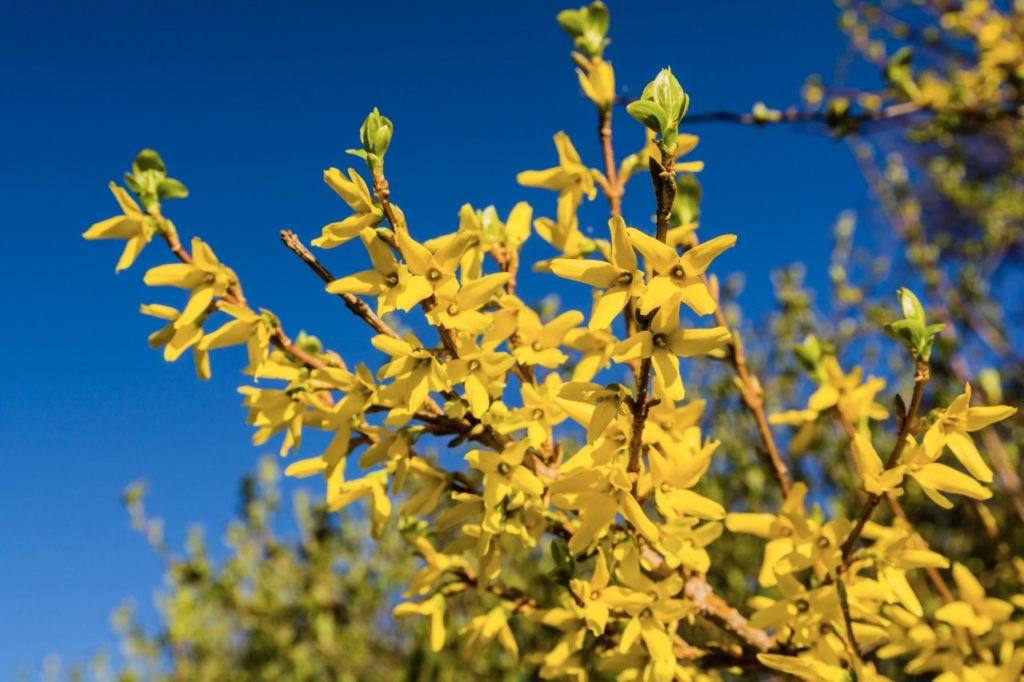
The only time when forsythia might be pruned at a different time is when hard pruning is being carried out to renovate an overgrown or unattractive forsythia that has been neglected over previous years.
In this case, hard pruning should be undertaken between autumn and early spring, during the dormant period.
Pruning Young Shrubs
When plants are young and newly placed in a garden, you should typically simply let the plant develop and grow with only minimal intervention.
However, it is still a good idea to give the plant a quick look in spring, and to remove any dead, damaged or diseased material, and perhaps any shoots that are poorly positioned.
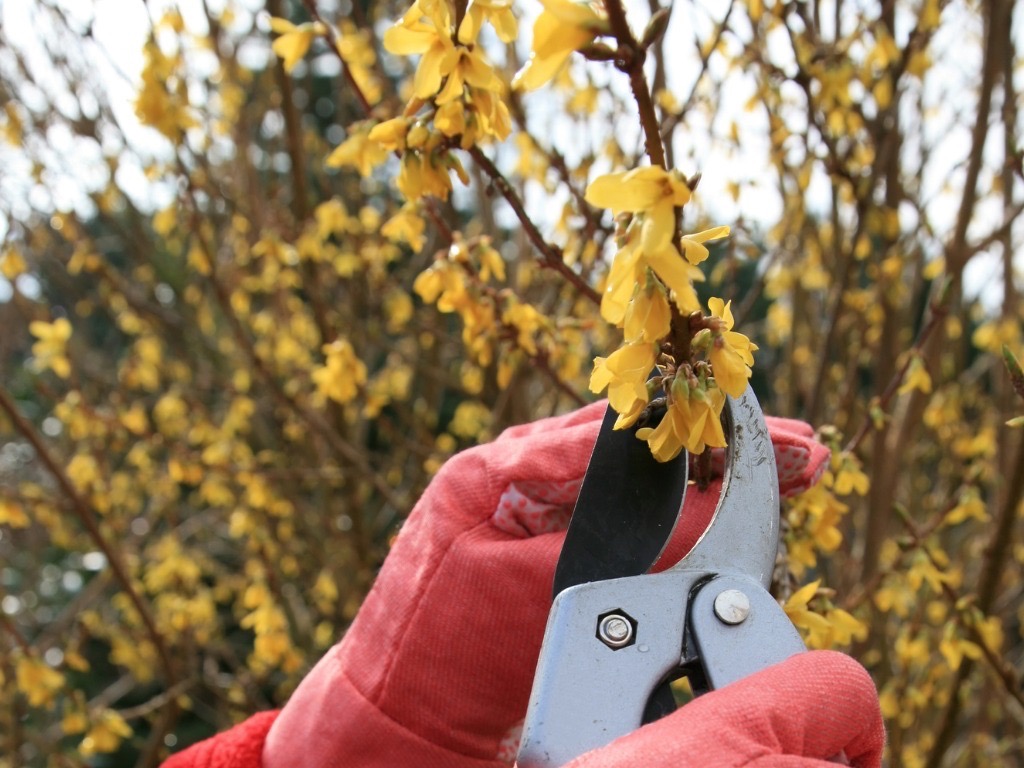
Small dwarf cultivars of forsythia are also best pruned minimally in the same way as all young shrubs of this genus throughout their lives.
They won’t typically require as much pruning as taller types and won’t grow as quickly or vigorously as most shrubs in this genus.
Pruning Mature Stand-Alone Shrubs
Once forsythias become more mature, getting into the habit of pruning annually each spring is a good idea.
You should first cut back the growth that has flowered to vigorous shoots lying lower down on the plant – ideally shoots that face upwards and to the outside of the shrub.
Then, you should also consider removing up to 20% of the oldest stems down to the ground.

This will encourage new, vigorous and healthy growth to emerge.
It is also a good idea to thin out the centre of the plant by removing some stems to reduce congestion and, at the same time, to remove any weak growth.
By removing weak stems, you can help the plant focus on its healthiest portions and branches, and also increase airflow through the plant – and further help to avoid overcrowding.
Hard Pruning
If you have been neglecting a forsythia in your garden, or have inherited one from a previous occupant, hard pruning may make it possible to recover a shrub that has become leggy, misshapen, too large or bare and poorly flowering.
“Once a Forsythia bush consists mainly of older wood, it will begin to produce more flowers,” Master Horticulturist Colin Skelly explains.
“This is the main reason I come across poorly flowering Forstyhia. The aim is to have a balance of older and newer stems to ensure that there are always floriferous stems in the wings.
“Once that cycle is broken, the only option is to prune back hard and start again with regular annual pruning to get the branch age balance back.”
If you do decide to carry out this type of pruning to renovate a mature shrub, then it is best to undertake this work during the dormant period between autumn and early spring.
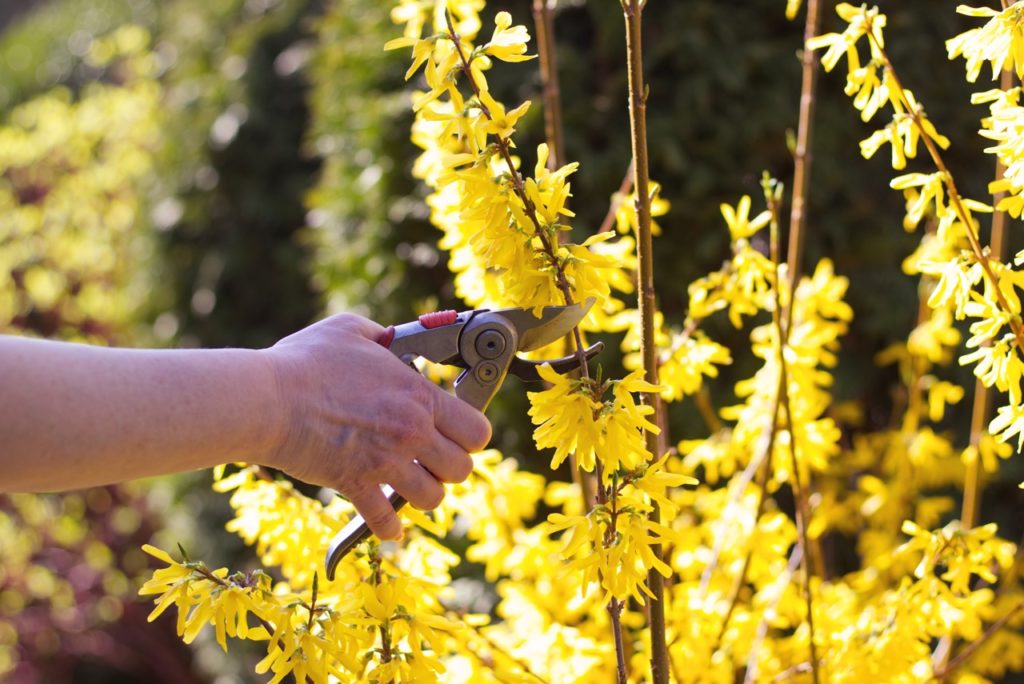
This hard pruning involves cutting down all stems almost to the ground and, of course, will result in the loss of flowers the following spring.
However, if you mulch well with organic matter and water well after this treatment, new, healthy growth should replace the old growth that was removed, leading to an improvement in the appearance and flowering of the plant.
You can undertake this type of pruning all at once or retain some old growth and flowers and cut back only some of the older growth in the first year – completing the hard pruning for renovation in the second year.
Pruning Wall-Trained Types
With wall-trained forsythia, natural growth is curtailed and the plant is trained and tied into horizontal wires or a trellis to grow vertically flat against a wall or fence.
Immediately after flowering, cut back the flowering stems to leave just 1-2 buds before the main framework branches of the plant.
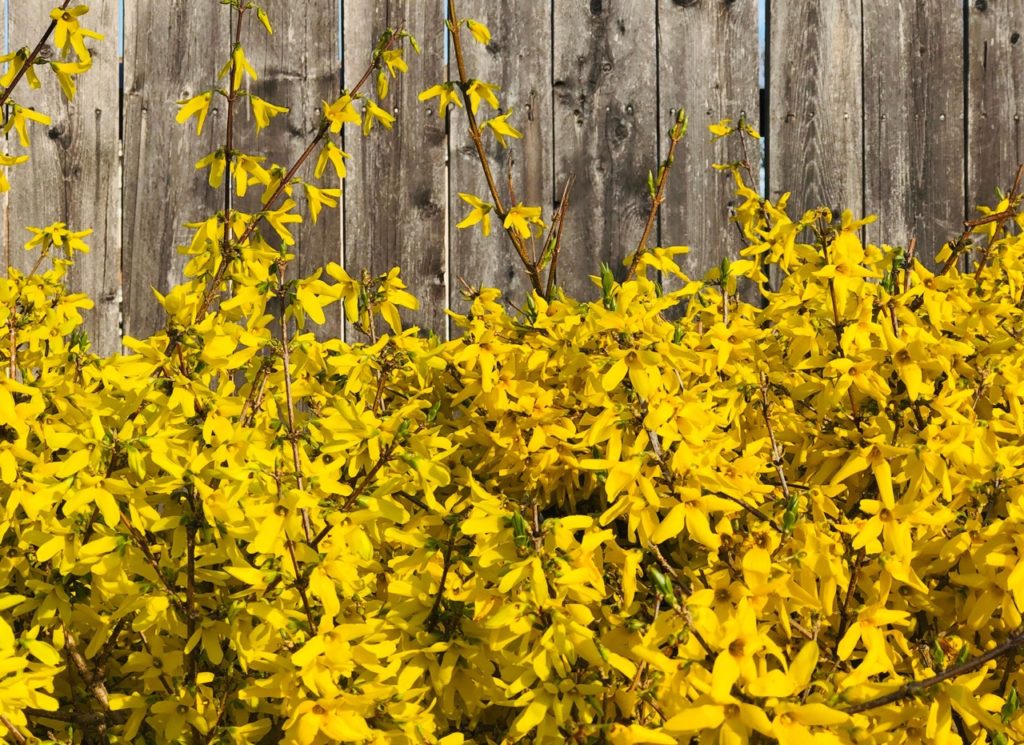
If one of the framework branches does not flower well, then you may also wish to cut this out entirely and select and retain younger shoots to use as replacements for this older wood.
These new shoots can be tied into the framework to fill in gaps.
Pruning A Forsythia Hedge
When pruning a forsythia hedge, the steps will be the same as for a mature stand-alone shrub.
There will be just one added consideration, and that is pruning to maintain the shape and size of the hedge.
As with stand-alone mature forsythia, you should first cut back flowered growth to vigorous shoots lower down that face upwards and to the outside of the shrub.
Just remember as you do so that your aim is to restore the neat outline of the hedge.
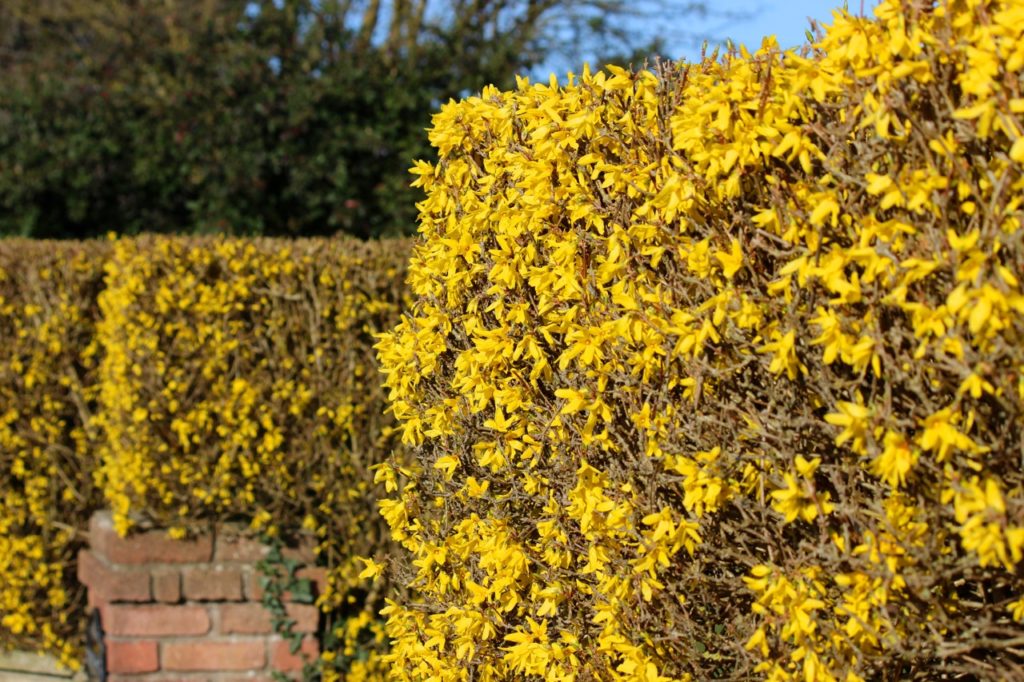
Then, you should also consider removing up to 20% of the oldest stems down to the ground.
Again, remember, this will encourage new, vigorous and healthy growth to emerge.
As you can see from the above, how precisely you will prune forsythia will depend on its age and the style or situation in which it is grown.
However, once you have familiarised yourself with the requirements of annual pruning for this genus, you should find pruning forsythia to be a fairly quick and straightforward job each year.
